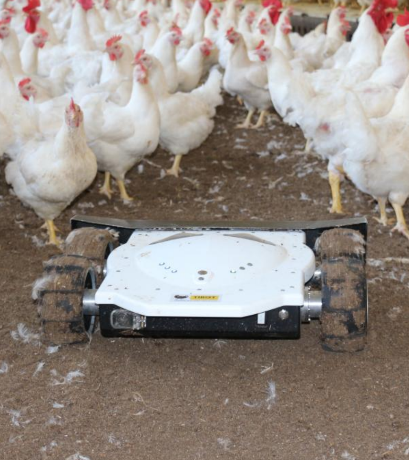> Did You Know?
Alibaba
Market of Artificial Intelligence (AI) in agriculture is estimated to reach more than 2,5 billion USD in 2025. Farmer-driven tractors and harvesters equipped with smart technologies are already working fields around the world, using sensor networks, AI-driven monitors, onboard controllers, and other advanced embedded technologies. Camera-equipped drones, connective automative technologies and prototypes of autonomous machines are also tested for crop production.
In animal production, data mining is also the “gold” for farmers and AI can help, with automatic in-depth analysis, for decision support tools. Some robots are tested to replace humans for repetitive and monotonous tasks. Using AI to complement or augment the human brain (collaborative intelligence) can give the potential to be more efficient and accurate in diagnoses.
Drones are more adapted for outdoor and free-range animals. Automatic equipments can measure feed and water consumption for more precise collective or individual feeding. Sensors in animal housing can monitor air quality factors such as temperature and ventilation. They can also measure gases such as CO2, NH3 and H2S which have significant roles on animal/farmer health and environmental emissions. Combining sensor applications with cloud-based technologies is now part of smart farming future.
Machine-learning ability of devices and robots multiply the potential for data management. Scientists are now teaching machines with sound/image recognition how to identify any sound of distress or discomfort, how to detect behavioural changes and early stage signs of diseases.
In poultry houses, sensors can monitor lighting intensity. Robots in confined environments may be used to stimulate bird activity and to scratch the litter to eliminate caking and wet spots. They can also help for ill bird detection and removal, to reduce floor egg incidence, or to collect floor eggs. A form of AI, machine vision, is used to grade eggs as well as determine defects. It can also be used in assessing infertility in incubation.
By 2050, it is estimated that the average poultry farm will generate 4 million data points through internet of things (IoT) sensors and related devices.
In pig production, this digital revolution is also attracting huge investments from companies which are far from agriculture. It stimulates the creativity from start-up companies but also the interest from big names such as Microsoft, Huawei and Alibaba who are investing tens of millions. AI-powered programs are studied in transportation, logistics, aerospace, healthcare and now in pig production. For individual tracking, wireless radio-frequency identification (RFID) tags are more popular than facial recognition technology (FRT), which still needs to be validated on fattening pigs. Wearable sensors can be installed on the neck, at the leg or on the ear to monitor gestating sows’s level of activity. A device based on accelerometer technology can assess the behaviour and posture of the sow. As nutritional requirements of the animal depend on energy consumption related to exercise intensity and frequency, individual feeding can be improved with better precision.
Pig buildings can be equipped with automatic weighing systems, but also with surveillance cameras for animal tracking (for individual identification with breed and age, for countings, and to monitor animal movements). Infrared sensors can monitor body temperature, while voice detection devices will measure sounds such as coughs for an early detection of respiratory diseases. They may also track the noise of suckling piglets which are suffocating under the weight of “negligent” mothers while are eating.
Successful implementation of digital technologies in animal farming will depend on various variables including:
- Their return on investment and cost/benefit ratio
- Their span life in harsh farming conditions
- A meaningful interpretation of results
- An integrated management of data from different devices
- A sufficient quality of internet connection in the countryside
- The status about the property of data generated on farms
- Some social acceptance from farmers and consumers
- Their environmental impacts.



